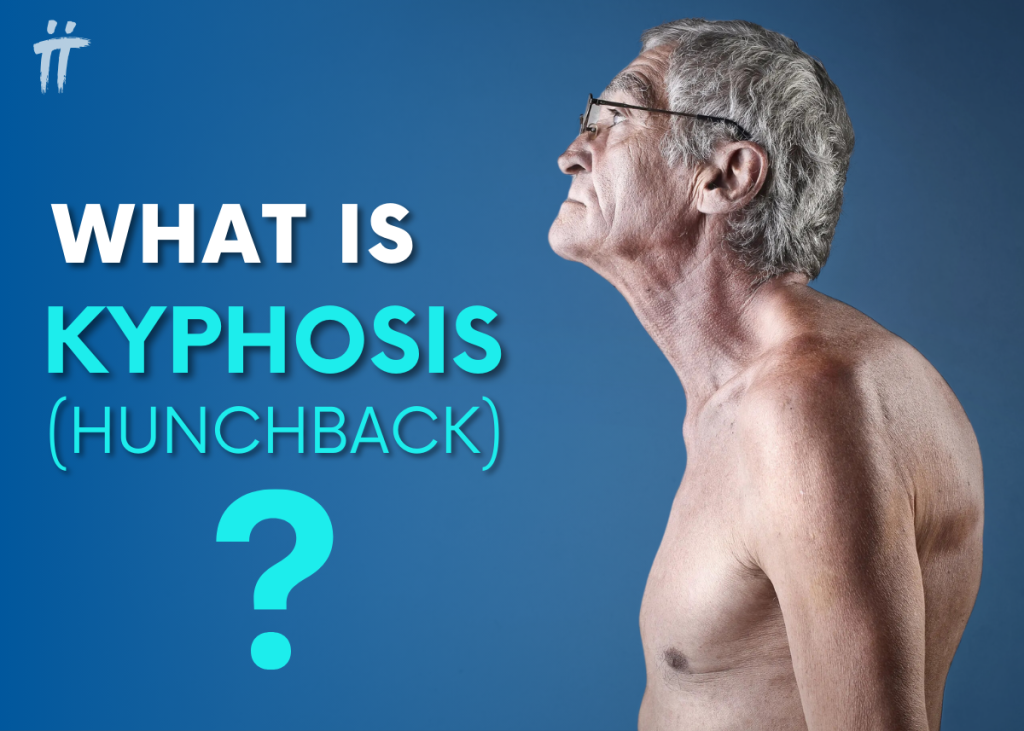
“Sit up straight, don’t slouch! Most of us are familiar with these sentences that we say to our children because we don’t want them to suffer from slouching, or that we have often heard since childhood and immediately correct our posture. It can be congenital or may occur later due to reasons such as poor posture. hunchback or as it’s called in medicine. kyphosis (hyperkyphosis) is a spinal deformity that causes the upper back to appear rounder than normal. Although the spine has its own natural curvature, kyphosis is defined as a curvature angle of 50 degrees or more in the back. This condition, which can be seen at any age, including infancy, has different treatment methods. You can find the answers to the questions of what is kyphosis (hunchpback), how to treat hunchback, whether hunchback is corrected with kyphosis surgery and what you are curious about in the rest of our article.
Table of Contents:
- What is Humpback (Kyphosis)?
- What are the Types of Kyphosis?
- What are the Symptoms of Kyphosis (Humpback)?
- What Causes Humpback?
- How is Humpback (Kyphosis) Diagnosed?
- How is Kyphosis (Humpback) Treatment Performed?
- Kyphosis Surgery
- Frequently Asked Questions About Humpback (Kyphosis)
What is Humpback (Kyphosis)?
Kyphosis (hunchback) is a deformity of the spine that causes the upper back to appear more curved and hunched than normal by bending forward. The structure of the spine generally consists of 3 parts:
- The cervical spine consists of 7 vertebrae, which are located at the top of the neck and allow us to move our neck
- The thoracic spine includes 12 vertebrae in the back,
- The lumbar spine consists of 5 lumbar vertebrae in the lower back.
In a healthy spine, each segment has a natural curve when viewed from the side. This natural curvature of the spine is characterized by hollowness in the lumbar and cervical regions and a slight hump in the back, bulging outwards. The natural hump angle in the dorsal region is between 20-45 degrees (Picture 1).regions and a slight hump in the back, bulging outwards. The natural hump angle in the dorsal region is between 20-45 degrees (Picture 1).
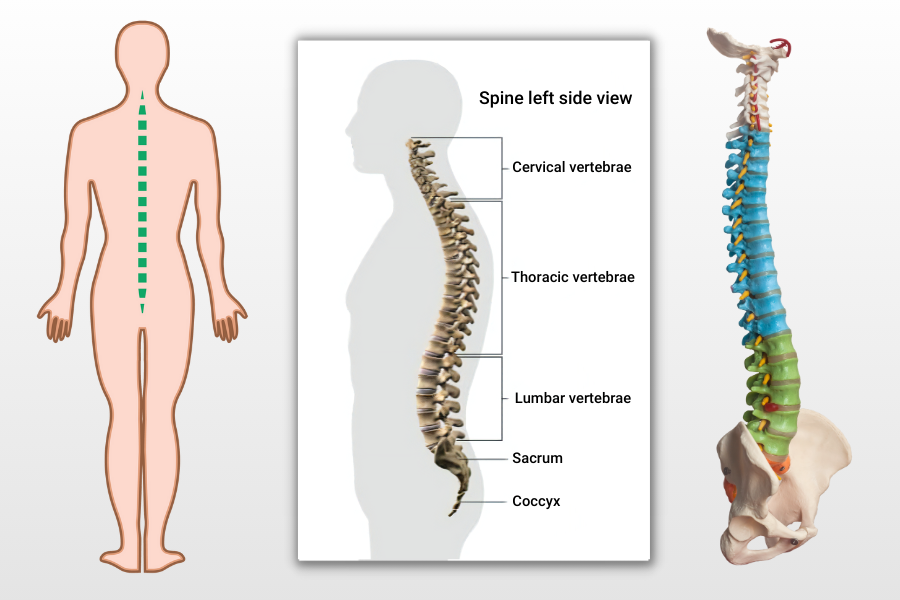
The natural curvature of a healthy spine is important for balance, supports our posture and helps us to stand upright. However, if this curvature is more or less than it should be, it is difficult to stand upright and posture disorders can be seen. A back curvature angle of 50 degrees or more is known as hyperkyphosis or commonly used kyphosis (hunchback) (Picture 2).

What are the Types of Kyphosis?
This disease, which can occur at any age, is more common in adolescents and older women. The most common causes of kyphosis in children and adolescents are:
- Postural Kyphosis: The most common type of hunchback often occurs during adolescence and develops due to poor posture. This type of hunchback can usually be corrected by correcting posture and kyphosis exercises and does not cause serious problems in adulthood.
- Scheuermann’s Kyphosis: Scheuermann’s kyphosis is a developmental type of kyphosis, meaning it occurs during growth. This condition, which affects the upper back, causes the spine to bend too far forward. It is named after the Danish radiologist who first described this condition. It is more serious than postural kyphosis and can cause pain in some cases. Standing or sitting for long periods of time worsens the pain.
- Congenital Kyphosis: A congenital condition that occurs when the development of the spine is abnormal while the baby is in the womb. As the curvature of the spine becomes more pronounced as the child grows, kyphosis surgery is usually required.
The severity of the curvature of the spine and hunchback varies from person to person. Generally, the larger the curve, the more severe the symptoms and complaints of kyphosis. In severe cases, severe curvature of the back can cause pain or pressure on the lungs, leading to heart and respiratory problems. Kyphosis surgery should be performed if the hump angle is above 75 degrees and the curvature tends to progress.ve 75 degrees and the curvature tends to progress.
What are the Symptoms of Kyphosis (Humpback)?
Apart from the abnormal curve and hunched appearance of the back, sometimes there are no symptoms or the patient may only complain of mild back pain. However, in severe curvatures, the patient may have a pronounced hump on the back and other symptoms.
Depending on the severity of the curvature of the back, the symptoms of kyphosis are as follows:
- Back pain and stiffness
- Tenderness in the spine
- When leaning forward, the upper back appears higher than normal
- Difference between right and left shoulder heights
- Difficulty looking up and across
Symptoms of severe hunchback include difficulty breathing and eating, and rapid fatigue. In addition, the symptoms worsen as the curvature of the back increases.
If you are experiencing symptoms of hunchback or if your complaints are increasing over time, you can consult our spine health specialists without delay. Please contact us about the most up-to-date treatment methods.
What Causes Humpback?
Hunchback can be congenital or may occur during adolescence or later in life for various reasons. It is more common in young people whose bones are growing rapidly. In addition, as we age, our vertebrae lose their flexibility and the spine starts to lean forward, which can cause hunchbacks.
There are different causes of hunchback. For example, postural kyphosis can be caused by posture disorders, such as carrying heavy bags. Scheuermann’s kyphosis is caused by a structural defect of the spine due to the vertebrae not developing properly. Congenital kyphosis is a congenital type that develops due to problems in the spine while still in the womb.
The causes of hunchback are usually the following:
- Impaired posture
- Scheuermann’s disease
- Aging
- Collapse of the back vertebrae due to osteoporosis
- Spinal injuries and fractures
- Infection
- Cancer and cancer treatments
- Metabolic problems
- Neuromuscular diseases
- Spina bifida
How is Humpback (Kyphosis) Diagnosed?
The diagnosis of kyphosis requires a detailed medical examination. During the examination, your doctor will check your balance, range of motion, reflexes and muscle strength. To better visualize the curvature of the spine and to observe any spinal deformity, you will be asked to bend forward at the waist with your arms at your side to assess the hump in your back (Picture 3). In addition, a medical history should be taken and, if the patient is a child, a history of development at birth or during growth should be obtained.

After examining the symptoms, radiological examinations such as X-rays, computed tomography (CT), magnetic resonance imaging (MRI) will be ordered to confirm the diagnosis and make a treatment plan. X-rays usually confirm the diagnosis of kyphosis and determine the degree of curvature. However, if he or she is experiencing muscle weakness, a test called electromyography (EMG), which measures the function of nerves and muscles, will be needed.
In cases of kyphosis that occur in adulthood, additional tests are needed to determine the underlying cause. Investigations such as bone density measurements to determine how strong your bones are and blood tests to check for infection.
How to Treat Kyphosis (Humpback)?
Early diagnosis is extremely important for the treatment of hunchback, especially in children and young people. Most mild spinal curvatures go unnoticed as they do not cause any symptoms or complaints. In mild cases, exercises and methods such as kyphosis bracing are recommended to improve posture and strengthen the muscles in the back. However, in more advanced cases, pain complaints, severe spinal deformities and even breathing difficulties can be observed. Patients with severe hunchback may require kyphosis surgery to reduce excessive spinal curvature and relieve symptoms.
Correcting your posture, physical therapy and exercises to strengthen your back muscles are usually enough to correct the hump caused by poor posture. However, for the treatment of kyphosis due to structural spinal disorders, treatment options should be evaluated according to age, gender and severity of spinal curvature.
Non-surgical methods applied in the treatment of hunchback are as follows;
- Painkillers are used to relieve back pain.
- Physical therapy and exercise help to strengthen back muscles, increase spinal flexibility, relieve back pain and improve posture.
- Kyphosis brace; kyphosis corset (humpback brace) is used to prevent the progression of curvature in children with mild and moderate kyphosis who continue to grow. It is generally recommended to use a kyphosis brace until the skeletal structure reaches maturity (Picture 4). In adults, the corset may not be useful in correcting the curvature of the spine as bone growth is complete. However, in women, a corset is recommended for kyphosis caused by collapse of the vertebrae due to osteoporosis (bone loss).
In order to follow the course of spinal curvature in adolescents and children, it is very important to monitor the progress of spinal curvature both through careful observation by the family and regular medical examinations.

Kyphosis Surgery
As a result of examinations and tests, kyphosis surgery is recommended for patients with a hump angle above 75 degrees. Young people with a hump that causes severe pain or appearance concerns can also choose to correct this deformity with surgery.
Kyphosis surgery is performed in the following cases;
- In cases where the curvature of the spine is very pronounced (75 degrees or more)
- In the presence of pain that cannot be controlled with medication
- Problems such as difficulty breathing
- If neurological symptoms occur
- In cases where spinal curvature progresses despite other treatments
Hunchback surgery helps to correct the curvature of the spine, improving the appearance of your back and relieving back pain. In cases where kyphosis surgery is required, you can benefit from surgery both aesthetically and in terms of eliminating complaints about your health.
Kyphosis surgery is usually performed with a surgical technique called spinal fusion, in which the vertebrae causing the curvature of the spine are joined together. Spinal fusion is the most common surgical procedure used to reduce the degree of curvature in the spine.
Kyphosis surgery with spinal fusion is similar to a welding procedure. The vertebrae causing the hump are fused together into a single solid bone. This reduces the degree of curvature.
During hunchback surgery, the surgeon accesses the spine through an incision in the middle of the back. Metal screws and rods are used to help align the vertebrae. Once the vertebrae are aligned, small pieces of bone called bone grafts are inserted into the spaces between the vertebrae. Thus, similar to the healing of a broken bone, the bone fragments placed between the vertebrae grow over time so that the vertebrae fuse together.
The aim during kyphosis surgery is to correct the hump within safe limits. The surgery takes 4-8 hours. After the surgery, you may need to stay in the hospital for 3-4 days or more depending on your general health condition. You may be asked to wear a back support brace for up to 9 months to support your spine during the postoperative recovery period. You can gradually start school or light work within 4-6 weeks after kyphosis surgery. Generally, you can return to non-impact sports activities 1 year after surgery.
It should be kept in mind that kyphosis surgery carries some risks like any other surgical procedure. Apart from general surgical risks such as infection and bleeding, there are risks such as paralysis due to damage to the spinal cord and nerves passing through the spine. It is therefore important to research your options when deciding on spine surgery. You can contact us for information about kyphosis surgery and consult our specialist physicians in the field of spine surgery.
Robotic Kyphosis Surgery
Robotic spine surgery is a new generation technology that minimizes the risk of spine surgeries and enables the surgery to be performed with high reliability and precision. Kyphosis surgery can be performed with robotic spine surgery. Thanks to robotic technology, screw placement in the spine during surgery is performed with an accuracy rate of over 99.5%, minimizing the risks associated with surgery such as nerve damage, paralysis and vascular injury. Furthermore, robotic spine surgery is performed with the best fit to the unique anatomical structure of your spine.
Some of the advantages of kyphosis surgery with robotic spine surgery include:
- During surgery, surgical instruments such as screws are inserted into the spine in the most accurate and precise way,
- Surgery is performed in the most appropriate way for your anatomy,
- Procedures such as screw positioning in the spine are monitored simultaneously with 3D imaging during surgery, which minimizes the margin for error,
- High accuracy and precision minimize the risks of spine surgery,
- Postoperative recovery is painless and faster.

Robotic spine surgery is a revolutionary technology in modern orthopedic applications. After a number of centers around the world, robotic spine surgery has started to be applied for the first time in Turkey in our Turan&Turan Bone Muscle Joint Health Center in Bursa. You can contact us for detailed information about kyphosis surgery with robotic spine surgery and share your curiosities with us in the comments.
Frequently Asked Questions About Humpback (Kyphosis)
Can sports correct a hump?
Which doctor should I see for hunchback treatment?
Which movements can correct the hump?
Kyphosis exercises and stretches to strengthen your back muscles are recommended to prevent and improve hunchback due to poor posture. As an example of a slouching exercise, you can try the Superman movement; lying face down on a flat surface, stretch your hands forward. Keep your head in the center, looking at the floor and try to lift your arms and legs upwards towards the ceiling. Hold for 3 seconds and repeat the movement 10 times.
How long does it take to treat kyphosis?
There are different types of kyphosis that require different treatments. Depending on the cause of the hump, the severity of the spinal curvature and age, treatment options and treatment times will vary. For example, children with mild to moderate kyphosis are asked to wear a kyphosis brace until bone growth is complete. In severe cases requiring kyphosis surgery, postoperative recovery may take 4-6 weeks or more.
Depending on the cause, kyphosis (hunchback) can be treated with non-surgical methods in many cases when diagnosed early. However, if the curvature of the spine progresses, it can lead to serious problems. In this case, you should consider the option of kyphosis surgery to lead a healthier and more active life.
If you have any symptoms of kyphosis or have any doubts about your spine health, you can contact us for early diagnosis and treatment of the problem and make an appointment with our physicians specialized in spine health.




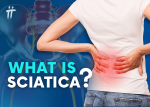
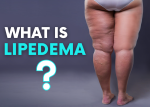

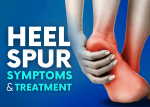
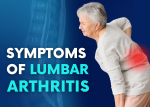
Leave a Comment